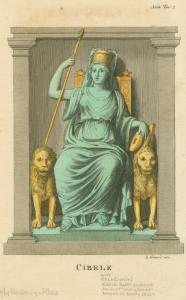| Monday - Thursday | 7:45 a.m. - 11:00 p.m. | |
| Friday | 7:45 a.m. - 8:00 p.m. | |
| Saturday | 10:00 a.m. - 4:30 p.m. |
|
| Sunday | Closed | |
WST 110: Matar/Kybele/Cybele
Articles & Related Information
NYPL
Cibele
Books
-
The Mother of the Gods, Athens, and the Tyranny of Asia by
ISBN: 9780520243491Publication Date: 2006-07-11 -
-
Romanising Oriental Gods by
ISBN: 9789004132931Publication Date: 2008-09-17

